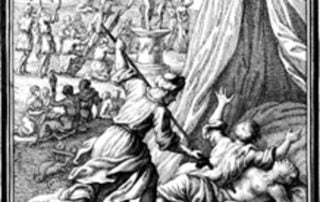Sukkot — Bringing Time into Space
Jews have a very strange custom to take four species (Heb. arba’a minim)—a fruit of a citron tree (etrog), a branch of a date palm (lulav), boughs from the myrtle tree (chadassim), and branches of the willow tree (aravot)—and wave them in all six directions (na’anuim) while holding the species together. The precise movements involve bringing the bunch to one’s heart, then moving them to and fro in all six directions, three in each direction, every time returning the bunch to the heart. A strange sight indeed… what could it possibly mean? I’ve written before that Sukkot has to do with bringing holiness into time and space. The seven days of dwelling in the sukkah-booth (a.k.a. tabernacle) is related to the most important cycle of time – 7: there are seven days in a week, seven years in a Sabbatical cycle (shemita), seven [...]



